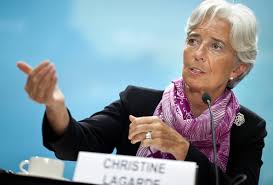The International Monetary Fund (IMF) on Wednesday reported that women remained grossly underrepresented at all levels of the global financial system, from depositors and borrowers to bank board members and regulators.
According to the organisation’s new study, greater inclusion of women as users, providers, and regulators of financial services would have benefits beyond addressing gender inequality.
It reported that narrowing the gender gap would foster greater stability in the banking system, enhance economic growth and possibly contribute to more effective monetary and fiscal policies.
The study showed that women on average accounted for just 40 percent of bank depositors and borrowers in 2016, according to IMF survey results published this year—the first time such data became available.
The IMF noted that the underlying these aggregate figures were large variations across regions and countries. For example, women accounted for 51 percent of borrowers in Brazil, compared with only 8 percent in Pakistan.
It stated further: “Growing evidence suggests that increasing women’s access to and use of financial services can have both economic and societal benefits. For example, in Kenya, women merchants who opened a basic bank account invested more in their businesses. Female-headed households in Nepal spent more on education after opening a savings account.
“More inclusive financial systems can magnify the effectiveness of fiscal and monetary policies.
“Such benefits illustrate why economic growth increases with greater access to financial services. The same benefits result from increasing female users of these services. More inclusive financial systems in turn can magnify the effectiveness of fiscal and monetary policies by broadening financial markets and the tax base.
“In a previous paper, we showed that large gaps persist between the representation of men and women in leadership positions in banks and banking supervision agencies worldwide.
“We found that women accounted for less than 2 percent of financial institutions’ chief executive officers and less than 20 percent of executive board members. The proportion of women on the boards of banking-supervision agencies was also low—just 17 prcent on average in 2015.
“As with users of financial services, we found considerable regional variation in the presence of women in banking leadership roles. Sub-Saharan African countries had the highest shares of female banking executives, while Latin America and the Caribbean had the lowest. Advanced economies were in the middle.
“We found that the gender gap in leadership does make a difference when it comes to bank stability. Banks with higher shares of women board members had higher capital buffers, a lower proportion of nonperforming loans, and greater resistance to stress.
“We found the same relationship between bank stability and the presence of women on banking regulatory boards”, the multilateral institution added.






